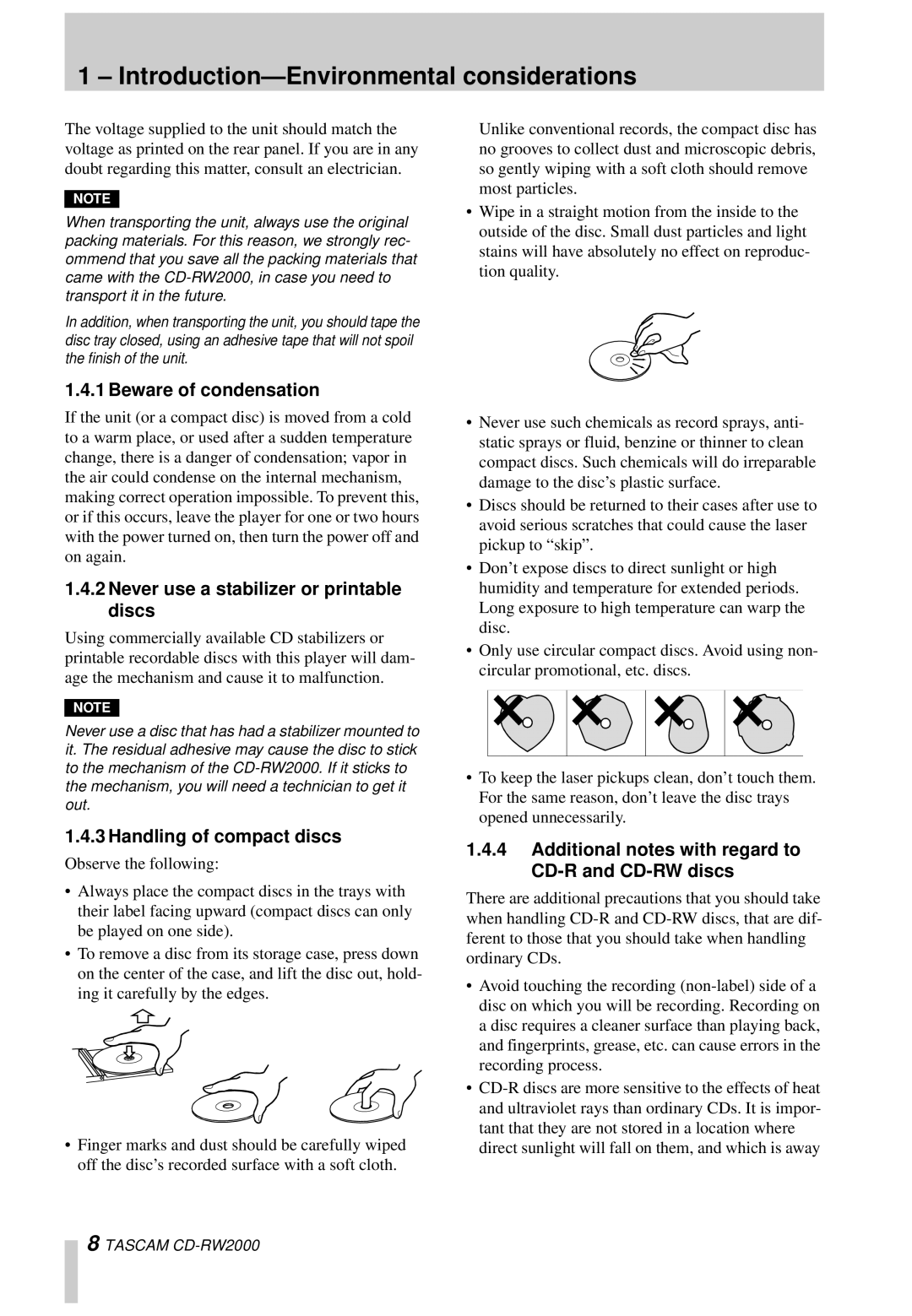
1 – Introduction—Environmental considerations
The voltage supplied to the unit should match the voltage as printed on the rear panel. If you are in any doubt regarding this matter, consult an electrician.
NOTE
When transporting the unit, always use the original packing materials. For this reason, we strongly rec- ommend that you save all the packing materials that came with the
In addition, when transporting the unit, you should tape the disc tray closed, using an adhesive tape that will not spoil the finish of the unit.
Unlike conventional records, the compact disc has no grooves to collect dust and microscopic debris, so gently wiping with a soft cloth should remove most particles.
•Wipe in a straight motion from the inside to the outside of the disc. Small dust particles and light stains will have absolutely no effect on reproduc- tion quality.
1.4.1 Beware of condensation
If the unit (or a compact disc) is moved from a cold to a warm place, or used after a sudden temperature change, there is a danger of condensation; vapor in the air could condense on the internal mechanism, making correct operation impossible. To prevent this, or if this occurs, leave the player for one or two hours with the power turned on, then turn the power off and on again.
1.4.2Never use a stabilizer or printable discs
Using commercially available CD stabilizers or printable recordable discs with this player will dam- age the mechanism and cause it to malfunction.
NOTE
Never use a disc that has had a stabilizer mounted to it. The residual adhesive may cause the disc to stick to the mechanism of the
1.4.3 Handling of compact discs
Observe the following:
•Always place the compact discs in the trays with their label facing upward (compact discs can only be played on one side).
•To remove a disc from its storage case, press down on the center of the case, and lift the disc out, hold- ing it carefully by the edges.
•Finger marks and dust should be carefully wiped off the disc’s recorded surface with a soft cloth.
•Never use such chemicals as record sprays, anti- static sprays or fluid, benzine or thinner to clean compact discs. Such chemicals will do irreparable damage to the disc’s plastic surface.
•Discs should be returned to their cases after use to avoid serious scratches that could cause the laser pickup to “skip”.
•Don’t expose discs to direct sunlight or high humidity and temperature for extended periods. Long exposure to high temperature can warp the disc.
•Only use circular compact discs. Avoid using non- circular promotional, etc. discs.
•To keep the laser pickups clean, don’t touch them. For the same reason, don’t leave the disc trays opened unnecessarily.
1.4.4Additional notes with regard to CD-R and CD-RW discs
There are additional precautions that you should take when handling
•Avoid touching the recording
•
8 TASCAM
